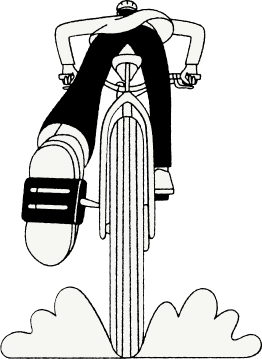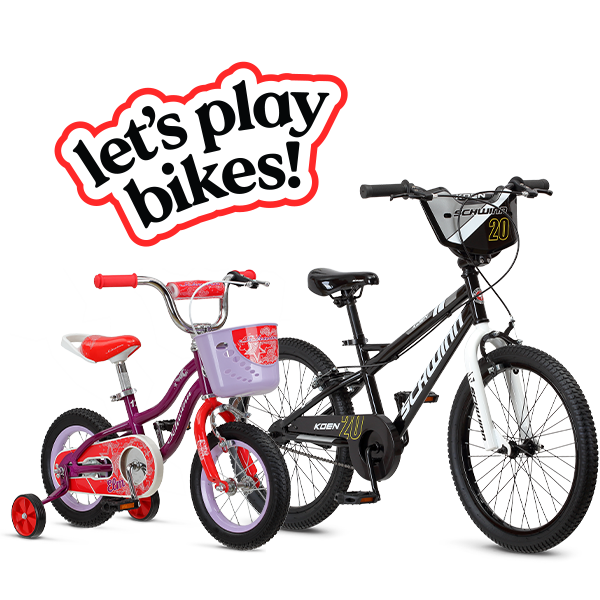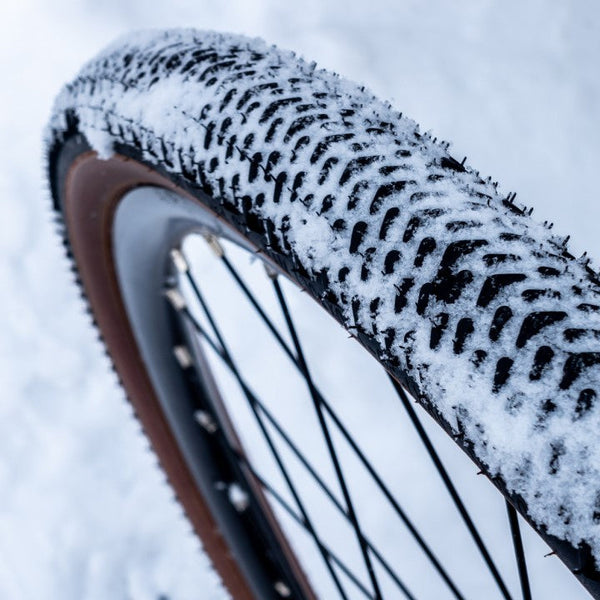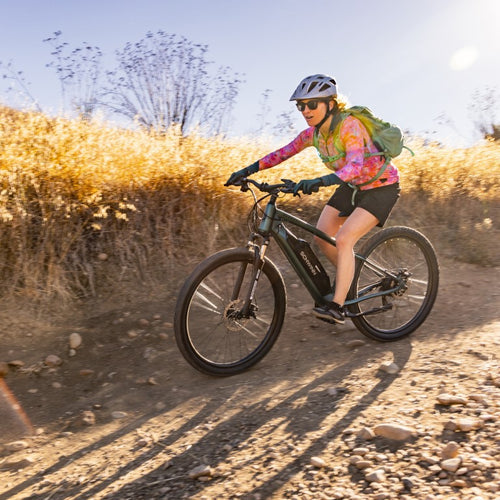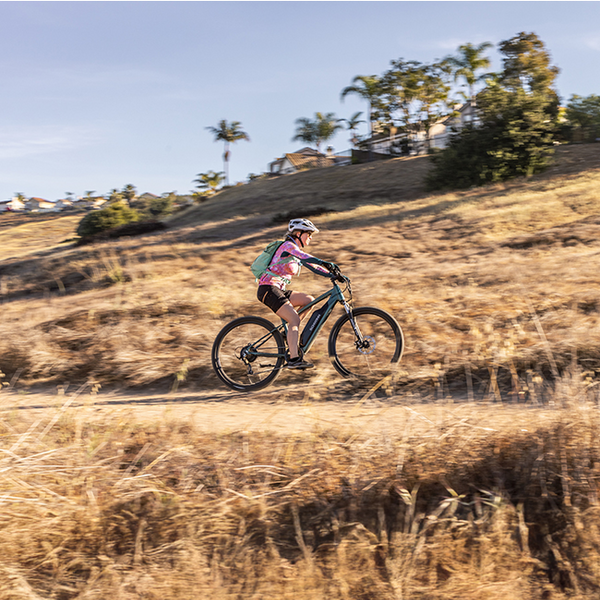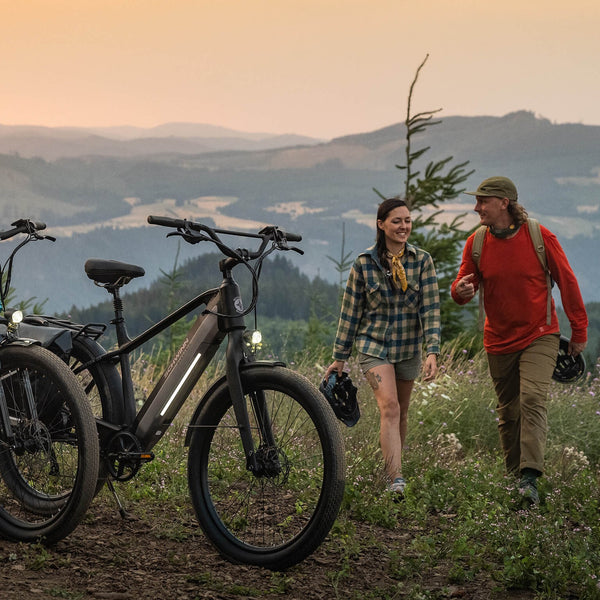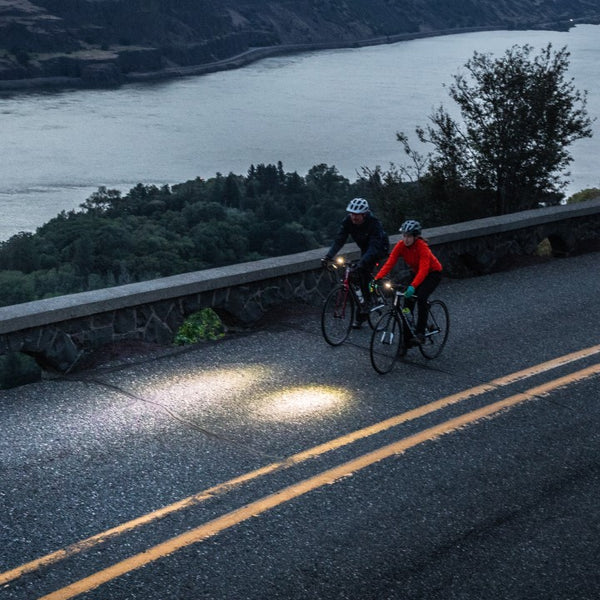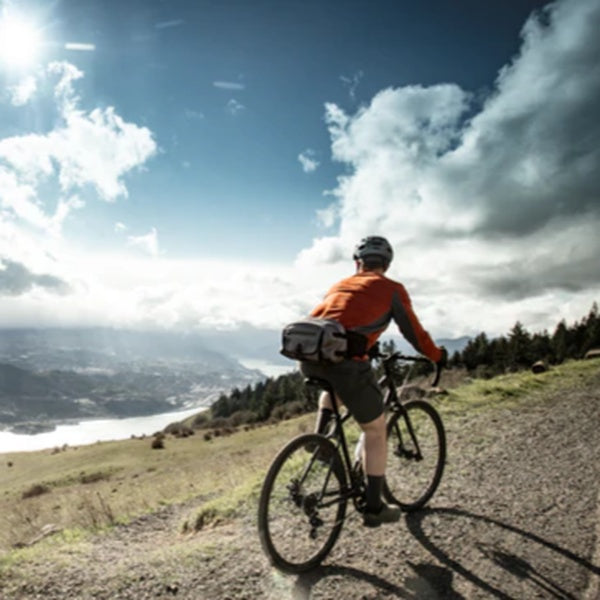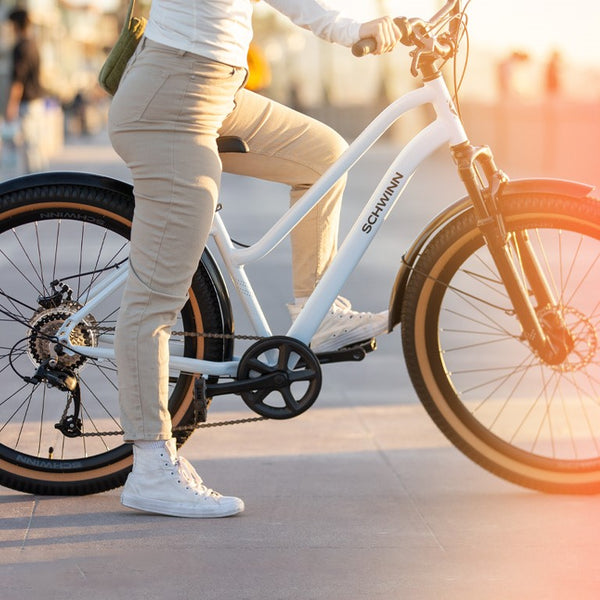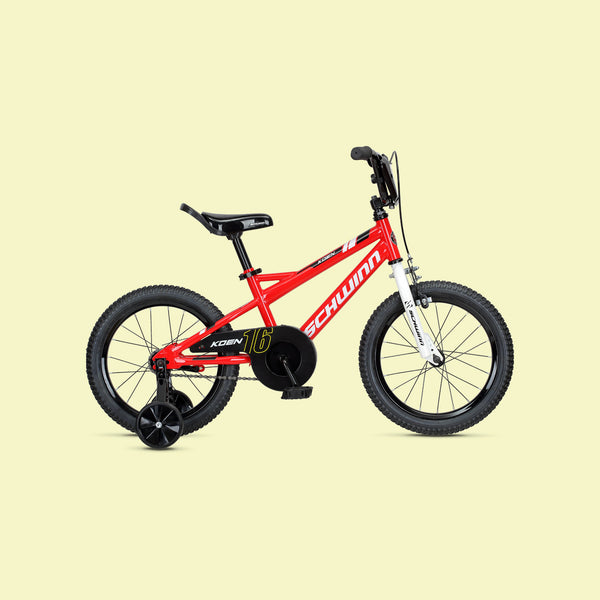Signal before you make a turn.
An important way to stay safe when biking with other motorized vehicles or bicycles is to use proper hand signals. Hand signals tell drivers where you're headed and when you're stopping. Drivers can react to you the same way they would to a car who is using their blinkers or brake lights.
Use sound to signal walkers.
Walkers still have the right of way and can't see your hand signals like drivers in a car can. Just as drivers have to slow down for walkers, bikers have to do the same on the road or on shared bike paths.
If you are coming up on a walker, use audio cues to let them know of your presence. A courtesy call “on your left” (always try to pass on the left) or a ring of your bell will work just fine. They'll appreciate your announcing — nothing's worse when you're walking or running and a bike zooms by without any warning.
One thing to keep in mind: some cities ban bikers from riding on sidewalks (usually for riders over the age of 13). Even if you're signaling walkers on a sidewalk, you could still get a ticket for riding in a no-bike zone. Make sure you familiarize yourself with road biking etiquette to avoid any issues.
Think about blind spots where signals won't work.
Car doors can be a cyclist’s worst nightmare, and hand or audio signals won't do you much good when a car door pops open. Keep 3 feet of space between you and a parked car. Giving a car a wide berth helps prevent getting hit by an unexpected opening door.
Meet Our Partner in Safety, Gage Duke
12-year-old Texas native Gage Duke turned tragedy into triumph, using lessons he learned to start Just Cuz Helmets Matter, a non-profit organization that provides bike safety education and bicycle helmets to those who can't afford them. Watch the video to learn more about Gage's wonderful cause and see how you can help make a difference. Let's help Gage save lives!
Learn more about Gage and his nonprofit by visiting his website: Just Cuz Helmets Matter.
